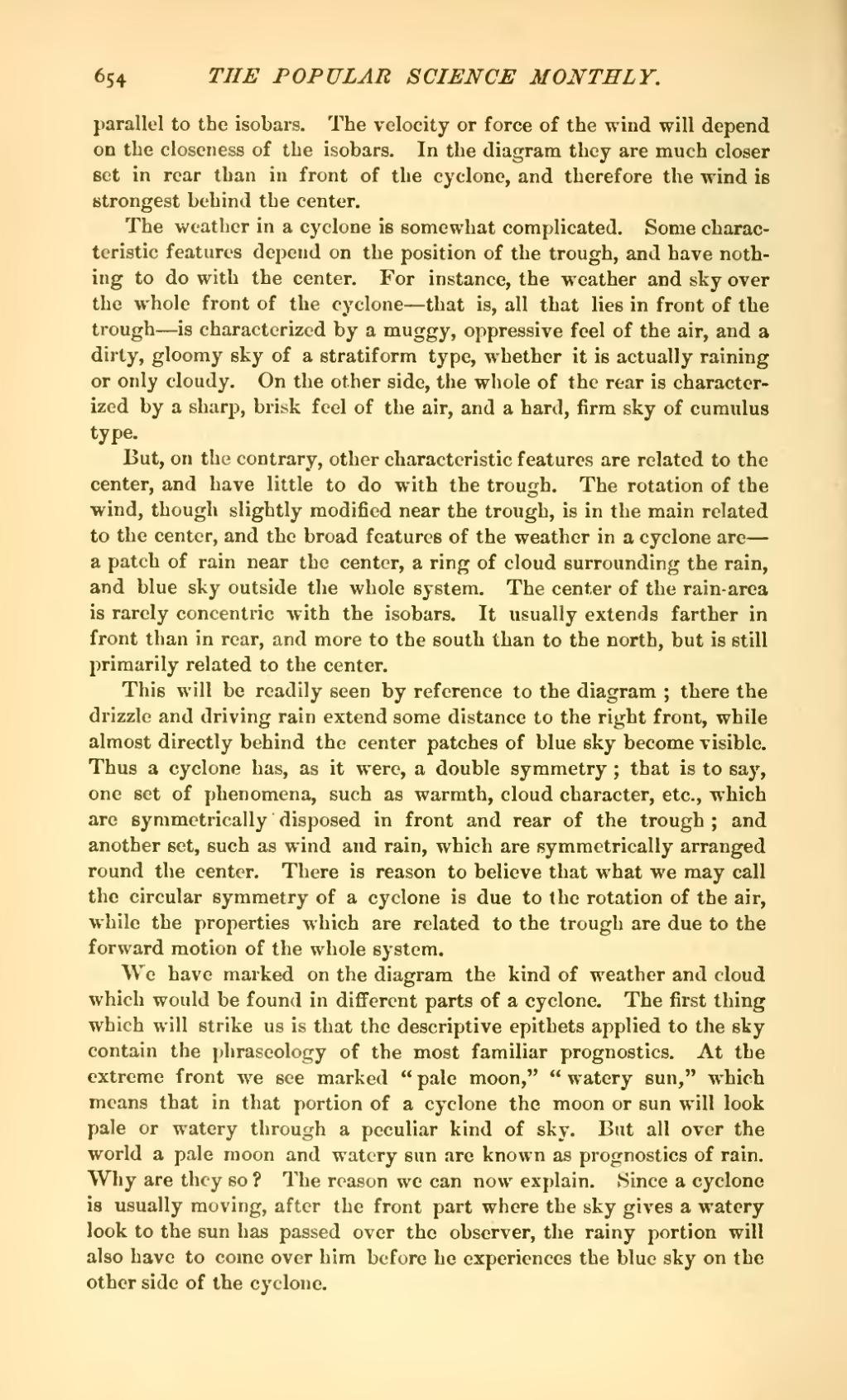parallel to the isobars. The velocity or force of the wind will depend on the closeness of the isobars. In the diagram they are much closer set in rear than in front of the cyclone, and therefore the wind is strongest behind the center.
The weather in a cyclone is somewhat complicated. Some characteristic features depend on the position of the trough, and have nothing to do with the center. For instance, the weather and sky over the whole front of the cyclone—that is, all that lies in front of the trough—is characterized by a muggy, oppressive feel of the air, and a dirty, gloomy sky of a stratiform type, whether it is actually raining or only cloudy. On the other side, the whole of the rear is characterized by a sharp, brisk feel of the air, and a hard, firm sky of cumulus type.
But, on the contrary, other characteristic features are related to the center, and have little to do with the trough. The rotation of the wind, though slightly modified near the trough, is in the main related to the center, and the broad features of the weather in a cyclone are—a patch of rain near the center, a ring of cloud surrounding the rain, and blue sky outside the whole system. The center of the rain-area is rarely concentric with the isobars. It usually extends farther in front than in rear, and more to the south than to the north, but is still primarily related to the center.
This will be readily seen by reference to the diagram; there the drizzle and driving rain extend some distance to the right front, while almost directly behind the center patches of blue sky become visible. Thus a cyclone has, as it were, a double symmetry; that is to say, one set of phenomena, such as warmth, cloud character, etc., which are symmetrically disposed in front and rear of the trough; and another set, such as wind and rain, which are symmetrically arranged round the center. There is reason to believe that what we may call the circular symmetry of a cyclone is due to the rotation of the air, while the properties which are related to the trough are due to the forward motion of the whole system.
We have marked on the diagram the kind of weather and cloud which would be found in different parts of a cyclone. The first thing which will strike us is that the descriptive epithets applied to the sky contain the phraseology of the most familiar prognostics. At the extreme front we see marked "pale moon," "watery sun," which means that in that portion of a cyclone the moon or sun will look pale or watery through a peculiar kind of sky. But all over the world a pale moon and watery sun are known as prognostics of rain. Why are they so? The reason we can now explain. Since a cyclone is usually moving, after the front part where the sky gives a watery look to the sun has passed over the observer, the rainy portion will also have to come over him before he experiences the blue sky on the other side of the cyclone.
